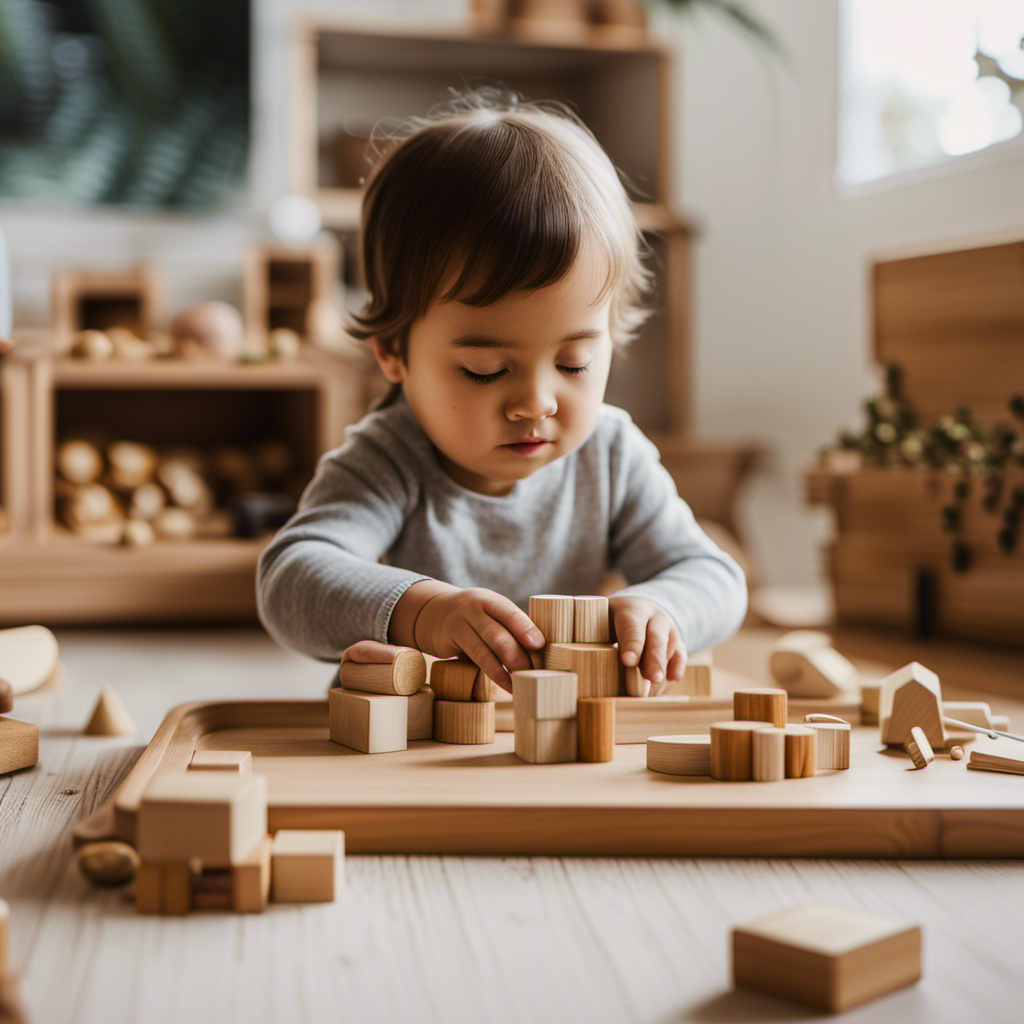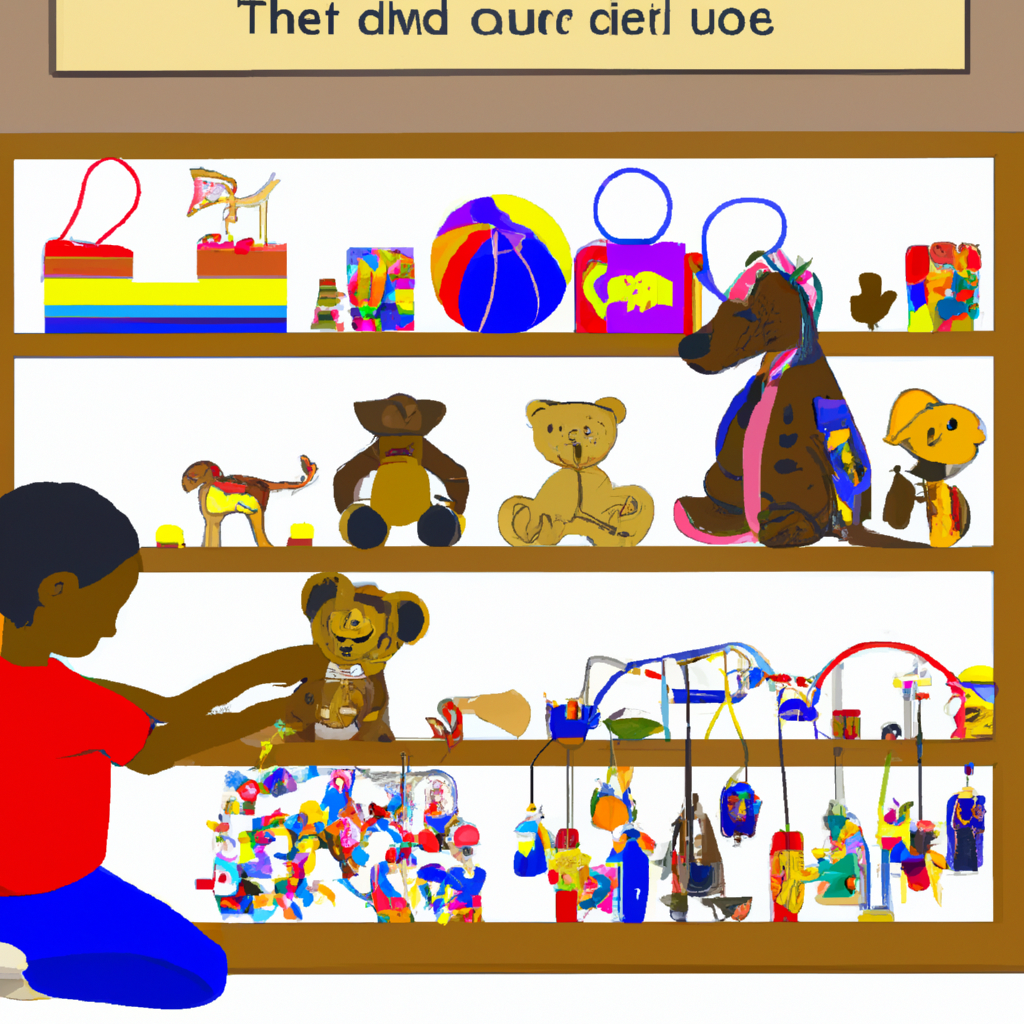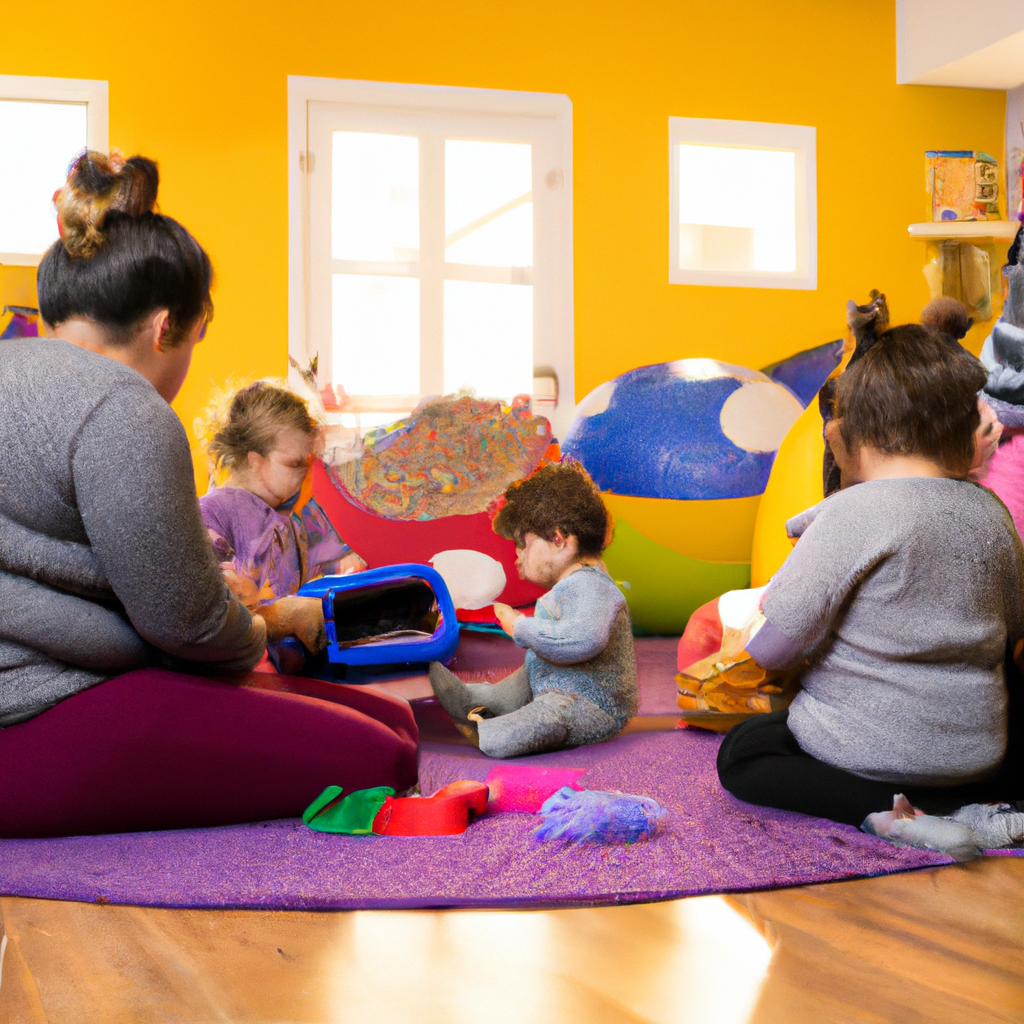Have you ever thought about how children develop their gross motor skills?
As a parent or caregiver, understanding the importance of gross motor skills in child development is crucial.
In this article, I will explore the definition, types, and age-appropriate activities for gross motor skills.
We will also discuss the factors that affect their development, the benefits they bring, and how to recognize any challenges or red flags.
Join me as we delve into the world of gross motor skills and discover ways to support and promote them at home.
Key Takeaways
- Developmental milestones are specific skills or abilities that children should accomplish at certain ages, and they can give an idea of how a child’s gross motor skills are developing.
- Gross motor skills involve physical coordination and development, and engaging in activities that promote these skills improves physical coordination, balance, strength, and body control.
- Gross motor skills are crucial for activities like walking, running, and playing sports, and participating in sports activities positively impacts gross motor skills development.
- Gross motor skills play a vital role in cognitive development, concentration, problem-solving, and social interactions, and supporting these skills allows children to reach their full potential.
Developmental Milestones
You should be aware of the developmental milestones that your child should be reaching in order to monitor their gross motor skill development. Developmental milestones are specific skills or abilities that children should be able to accomplish at certain ages. These milestones can give you an idea of how your child’s gross motor skills are developing and whether they are progressing at a typical rate.
For example, by the age of one, most children are able to sit without support and begin to crawl or even take their first steps. By the age of two, they should be able to walk independently and climb stairs using both feet. By the age of three, they should be able to jump with both feet off the ground and ride a tricycle.
Engaging your child in age-appropriate activities can help them reach these milestones. For infants, tummy time and reaching for toys can help strengthen their neck and upper body muscles. Toddlers can benefit from activities such as throwing and catching a ball, running, and jumping.
Understanding these developmental milestones and providing age-appropriate activities can support your child’s gross motor skill development. It is important to remember that every child develops at their own pace, so if you have concerns about your child’s gross motor skills, consult with a healthcare professional.
Now that we have discussed the importance of developmental milestones and age-appropriate activities, let’s delve into the definition and importance of gross motor skills in child development.
Definition and Importance
Physical coordination and development are crucial aspects of a child’s growth and overall well-being. As a parent or caregiver, it’s important to understand the benefits of gross motor skills and how they contribute to a child’s physical and cognitive development.
Research shows that engaging in activities that promote gross motor skills, such as running, jumping, and climbing, not only improves physical coordination but also enhances balance, strength, and overall body control.
Physical Coordination and Development
The child’s gross motor skills, such as coordination and development, are essential for physical movement. These skills involve the use of large muscle groups and are crucial for activities like walking, running, and playing sports.
Physical fitness and sports activities play a vital role in the development and improvement of gross motor skills in children. Through engaging in sports activities, children can enhance their coordination, balance, and strength. It also helps them develop body awareness and spatial orientation.
A study by Stodden et al. (2008) found that participation in sports activities positively impacts gross motor skills development in children. By engaging in physical activities, children not only improve their overall health and fitness but also enhance their gross motor skills, which have numerous benefits for their overall development.
These benefits will be further explored in the next section.
Benefits of Gross Motor Skills
Engaging in sports activities can greatly enhance a child’s overall health and fitness. It is not just about having fun and playing games; participating in sports can have numerous benefits for a child’s development.
One of the key benefits is enhancing balance and stability. Through activities like running, jumping, and climbing, children can improve their coordination and develop a strong sense of balance.
Additionally, sports activities can also help in improving muscle strength and endurance. Regular exercise and physical activity contribute to the development of strong muscles and increased stamina. This is crucial for children as they grow and progress in their physical abilities.
By engaging in sports, children can build a foundation of physical fitness that will benefit them throughout their lives.
Now, let’s explore the different types of gross motor skills.
Types of Gross Motor Skills
When it comes to gross motor skills, it’s important to understand that they are not all the same. Differentiating between different types of gross motor skills is crucial in understanding child development.
In this discussion, we will explore the various types of gross motor skills and delve into the importance they hold in a child’s overall growth and development.
Differentiating Gross Motor Skills
You can easily differentiate gross motor skills by observing the child’s physical movements and coordination. Contrary to common misconceptions, gross motor skills involve the larger muscles of the body that enable activities like running, jumping, and climbing. These skills are crucial in early childhood as they lay the foundation for future physical development and overall well-being.
By engaging in activities that promote gross motor skills, children develop strength, balance, and coordination, which are essential for daily tasks and participation in sports and physical activities. Additionally, gross motor skills play a vital role in cognitive development, as they enhance concentration, problem-solving abilities, and social interactions.
Understanding the importance of gross motor skills allows us to support children’s physical development and provide opportunities for them to thrive and reach their full potential. Transitioning into the next section, it becomes evident that the significance of gross motor skills extends beyond physical abilities.
Importance of Gross Motor Skills
During early childhood, gross motor skills play a vital role in a child’s overall development. These skills involve the use of large muscle groups and are essential for activities such as crawling, walking, and running.
Through play, children have the opportunity to develop and refine their gross motor skills. The role of play in developing these skills cannot be overstated. It allows children to engage in physical activities that challenge their balance, coordination, and strength.
Here are some key points about the importance of gross motor skills development in early childhood:
- Gross motor skills lay the foundation for future physical activities and sports.
- They contribute to the development of overall physical fitness and body awareness.
- Gross motor skills promote cognitive development and problem-solving abilities.
- They play a crucial role in a child’s social and emotional development, fostering self-confidence and peer interactions.
Transitioning to the subsequent section about age-appropriate activities, it is important to consider engaging children in activities that align with their current developmental stage.
Age-Appropriate Activities
Try incorporating age-appropriate activities into your child’s routine to promote the development of gross motor skills. Sensory integration and outdoor play are key elements in fostering the growth of these skills. Engaging in activities that stimulate the senses and provide opportunities for physical movement can have a significant impact on your child’s overall development.
Outdoor play is especially beneficial for the development of gross motor skills. Running, jumping, climbing, and playing games that involve coordination and balance help strengthen muscles and improve coordination. Additionally, being outdoors exposes children to different terrains and surfaces, which challenges their balance and spatial awareness.
Sensory integration activities can also play a crucial role in promoting gross motor skill development. These activities involve engaging the senses, such as touch, sight, sound, and movement, to help children process and respond to sensory information. Examples of sensory integration activities include playing with sensory bins filled with different textures, swinging, bouncing on a trampoline, or participating in obstacle courses.
By incorporating age-appropriate activities that focus on sensory integration and outdoor play, you can support your child’s development of gross motor skills. These activities provide opportunities for your child to explore and challenge their physical abilities, leading to improved coordination, strength, and overall motor skills.
Transitioning into the next section, it is important to consider the various factors that can affect the development of gross motor skills.
Factors Affecting Gross Motor Skill Development
When it comes to factors that can affect the development of gross motor skills, it’s important to consider various aspects of a child’s environment and genetics. Here are four key factors that can influence the development of gross motor skills:
-
Physical environment: The environment in which a child grows up plays a significant role in their gross motor skill development. Access to safe and stimulating play spaces, such as parks or playgrounds, can encourage children to engage in activities that promote the development of these skills.
-
Social interactions: Interacting with peers and adults is crucial for the development of gross motor skills. Through play and organized activities, children learn from each other and are motivated to try new movements and challenges.
-
Genetics: Research has shown that genetic factors can influence a child’s motor development. Certain genes may predispose children to have better coordination and physical abilities, which can impact their gross motor skill development.
-
Physical activity levels: The amount and type of physical activity a child engages in can directly affect their gross motor skill development. Regular participation in activities that require movement and coordination, such as running, jumping, and climbing, can strengthen and improve these skills.
Understanding these factors that influence gross motor skill development is essential for parents, educators, and healthcare professionals to provide the appropriate support and opportunities for children to thrive. Developing these skills is not only beneficial for their physical abilities but also for their overall well-being and future success.
Benefits of Developing Gross Motor Skills
Developing strong gross motor skills can have numerous benefits for children. These include improved coordination, increased physical fitness, and enhanced overall well-being. Gross motor skills involve the use of large muscle groups to perform actions such as running, jumping, and throwing. These skills are essential for children to navigate their environment and participate in physical activities.
One of the key benefits of developing gross motor skills is improved balance and stability. As children strengthen their muscles and become more aware of their body’s movements, they are better able to maintain balance and control their movements. This not only reduces the risk of falls and injuries but also enhances their overall confidence and sense of body awareness.
Another benefit is the development of body awareness and control. By engaging in activities that require coordination and control, such as riding a bike or climbing a jungle gym, children learn to understand how their bodies move and respond to different stimuli. This increased body awareness can have a positive impact on their overall physical development and can even extend to other areas of their lives, such as improved handwriting or better concentration in school.
Incorporating physical activities that promote gross motor skill development is crucial for children’s overall well-being. By encouraging them to engage in activities that challenge their balance and stability, as well as promote body awareness and control, we can help them develop strong gross motor skills that will benefit them throughout their lives.
However, there can be challenges and red flags to watch out for in the development of gross motor skills.
Challenges and Red Flags
One challenge that can arise in the development of gross motor skills is difficulty in maintaining balance and stability. This can manifest in various ways, such as stumbling or falling frequently, having trouble sitting upright without support, or struggling to coordinate movements while walking or running.
Identifying developmental delays in gross motor skills is crucial during early childhood, as it can help determine if further evaluation or intervention is necessary. Some red flags to look out for include:
- Delayed achievement of motor milestones, such as not being able to roll over, sit independently, or walk by the expected age.
- Persistent clumsiness or lack of coordination, making it challenging to participate in physical activities.
- Poor posture or difficulty in maintaining an upright position while sitting or standing.
- Unusual gait patterns, such as walking on tiptoes or with an excessively wide stance.
It is essential to note that each child develops at their own pace, and occasional difficulties or variations are normal. However, if these challenges persist or significantly impact a child’s daily life, it is crucial to seek professional guidance for further assessment and support.
Transitioning into the subsequent section about support and intervention strategies, it is vital to explore the various ways to address these challenges and help children develop their gross motor skills effectively.
Support and Intervention Strategies
To effectively support and intervene in improving your child’s physical abilities, it is important to explore various strategies and techniques.
As a parent or caregiver, there are several support strategies and intervention techniques that can be implemented to enhance your child’s gross motor skills.
One effective support strategy is providing a safe and stimulating environment. This includes ensuring that your child has enough space to move around freely and explore their surroundings. By offering a variety of age-appropriate toys, such as balls, climbing structures, and ride-on toys, you can encourage your child to engage in activities that promote gross motor development.
Another important intervention technique is modeling and demonstrating movements. By demonstrating how to perform certain movements, such as crawling, walking, or jumping, you can help your child understand the correct way to execute these actions. It is also crucial to provide positive reinforcement and praise when your child successfully completes a motor task.
Additionally, incorporating structured physical activities into your child’s daily routine is an effective support strategy. Activities such as swimming, dance, or martial arts can not only improve your child’s gross motor skills but also enhance their overall physical fitness and coordination.
By implementing these support strategies and intervention techniques, you can actively contribute to the development of your child’s gross motor skills.
Now let’s explore how you can further promote these skills at home.
Promoting Gross Motor Skills at Home
You can actively encourage your child’s physical abilities by incorporating fun and engaging activities into their daily routine at home. Home exercises and outdoor activities are great ways to promote gross motor skills in children. Research has shown that children who engage in regular physical activity have improved coordination, balance, and strength.
One simple home exercise you can do with your child is a mini obstacle course. Set up pillows to crawl over, hopscotch squares to jump on, and a balance beam made from a wooden board. This activity not only helps develop gross motor skills but also enhances problem-solving abilities and spatial awareness.
Outdoor activities such as riding a bike, playing catch, or jumping on a trampoline are excellent for improving gross motor skills. They provide opportunities for children to practice skills like running, jumping, and throwing while having fun in the fresh air.
Remember to provide a safe environment for your child to explore and play. Supervise them closely during physical activities and ensure that they are using appropriate equipment for their age and abilities.
Frequently Asked Questions
How Do Gross Motor Skills Relate to Fine Motor Skills in Child Development?
In child development, fine motor skills and gross motor skills are closely related.
Fine motor skills involve the coordination and control of small muscles, like those in the hands and fingers.
On the other hand, gross motor skills involve the coordination of larger muscle groups, like those in the arms and legs.
Both types of skills are important for a child’s overall development, as they work together to improve coordination, balance, and physical abilities.
Developing strong gross motor skills can also support the development of fine motor skills.
Are There Any Long-Term Effects if a Child Does Not Develop Gross Motor Skills at the Expected Age?
If a child doesn’t develop gross motor skills at the expected age, there can be long-term consequences. Early intervention is crucial for their overall development.
Without these skills, they may struggle with activities like running, jumping, or throwing. This can affect their participation in sports, playground games, and even daily tasks.
Research shows that kids who lack gross motor skills may also have difficulty with fine motor skills, coordination, and balance.
It’s important to identify and address these issues early on to support their growth and well-being.
Can Gross Motor Skill Development Be Influenced by a Child’s Overall Physical Health?
Gross motor skill development can indeed be influenced by a child’s overall physical health. Research suggests that nutrition plays a crucial role in the development of these skills. A well-balanced diet, rich in essential nutrients, can support the growth and functioning of muscles and bones, which are essential for gross motor skills.
Similarly, physical activity plays a vital role in the development of these skills. Regular exercise and movement help strengthen muscles, improve coordination, and enhance overall physical abilities in children.
Are There Any Specific Learning Disabilities or Disorders That Can Affect Gross Motor Skill Development?
Yes, there are specific learning disabilities or disorders that can affect gross motor skill development. These include conditions like cerebral palsy, Down syndrome, and autism spectrum disorder.
Children with these disabilities may experience challenges with coordination, balance, and movement. However, there are strategies that can be used to promote gross motor skill development in children with special needs or disabilities.
These may include adapted physical activities, occupational therapy, and specialized interventions tailored to the individual child’s needs.
What Are Some Strategies to Encourage Gross Motor Skill Development in Children With Special Needs or Disabilities?
When it comes to strategies for encouraging gross motor skill development in children with special needs or disabilities, there are a few key approaches to consider.
One approach is providing adaptations to activities that allow for greater accessibility and inclusion. This might involve using modified equipment or creating alternative ways for children to participate.
Another strategy is incorporating structured play and movement-based therapies. These can help improve coordination and strength in children with special needs or disabilities.
Overall, it’s important to tailor interventions to each child’s unique needs and abilities. This ensures that they receive the support and guidance necessary for their specific situation.
Conclusion
In conclusion, developing gross motor skills is a crucial aspect of a child’s overall development. These skills provide the necessary support for more complex movements and activities, like a foundation of a building. When gross motor skills are developed, children can move with ease and confidence, like a graceful dancer on stage. By understanding the importance of gross motor skills and implementing age-appropriate activities, parents and caregivers can support their child’s growth and help them reach their full potential.









